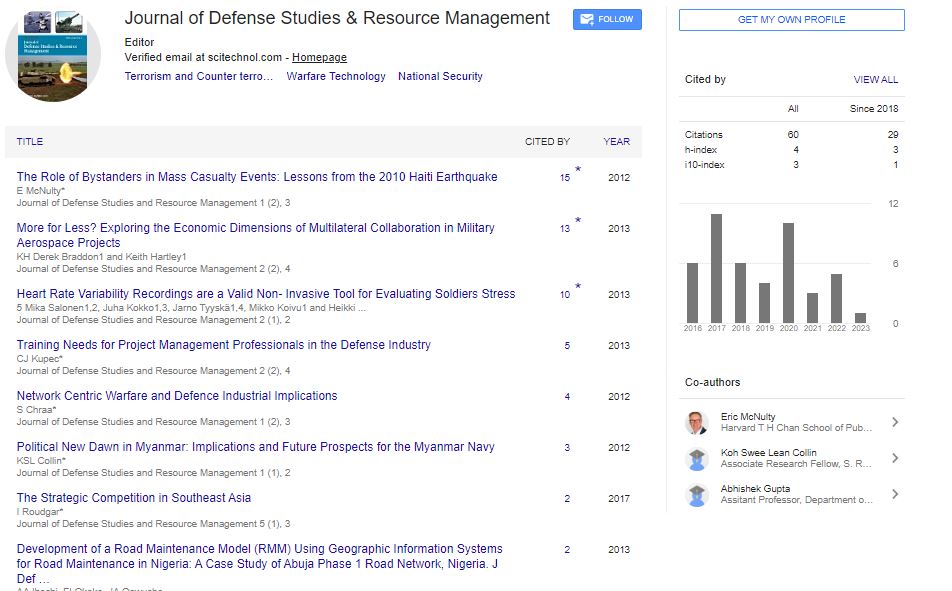Research Article, J Def Stud Resour Manage Vol: 1 Issue: 2
The Role of Bystanders in Mass Casualty Events: Lessons from the 2010 Haiti Earthquake
| Eric McNulty* |
| EricMcNulty, Senior Editorial Associate, P.O Box 381488, Cambridge, MA 02238-1488, United States Defense Studies and Resource Management, Harvard School of Public Health, USA |
| Corresponding author : EricMcNulty Senior Editorial Associate, United States Defense Studies and Resource Management, Harvard School of Public Health, P.O Box 381488, Cambridge, MA 02238-1488, USA E-mail: emcnulty@hsph.harvard.edu |
| Received: October 12, 2012 Accepted: October 25, 2012 Published: October 29, 2012 |
| Citation: McNulty E (2012) The Role of Bystanders in Mass Casualty Events: Lessons from the 2010 Haiti Earthquake. J Def Stud Resour Manage 1:2.doi:10.4172/2324-9315.1000103 |
Abstract
The Role of Bystanders in Mass Casualty Events: Lessons from the 2010 Haiti Earthquake
In routine emergencies, official emergency organizations bear the responsibility to manage the event and treat the wounded. The principal role for bystanders is to alert the appropriate emergency organizations. In mass casualty events (MCE), bystanders are the first responders. Research conducted among rescues in the immediate aftermath of the 2010 Haiti earthquake indicates that bystanders can be an effective complement to professional rescue forces and a necessary substitute when professionals lack sufficient surge capacity. Policy makers and planners may be able to save lives and elevate resilience by sharing emergency preparedness responsibility with the general public.
 Spanish
Spanish  Chinese
Chinese  Russian
Russian  German
German  French
French  Japanese
Japanese  Portuguese
Portuguese  Hindi
Hindi 